Intraspecific differences in short- and long-term foraging strategies of reef manta ray (Mobula alfredi) in the Chagos Archipelago
September 2023
Joanna L. Harris, Clare B. Embling, Genevieve Alexander, David Curnick, Ronan Roche, Niv Froman, Marleen Stuhr, Elaine S. Fileman, Simon Hilbourne, Rebecca Carter, Annie Murray, Jessica Savage & Guy M.W. Stevens
Keywords: Stable isotopes • Mobula alfredi • Foraging strategies • Niche overlap • Mixing model • IUU fishing
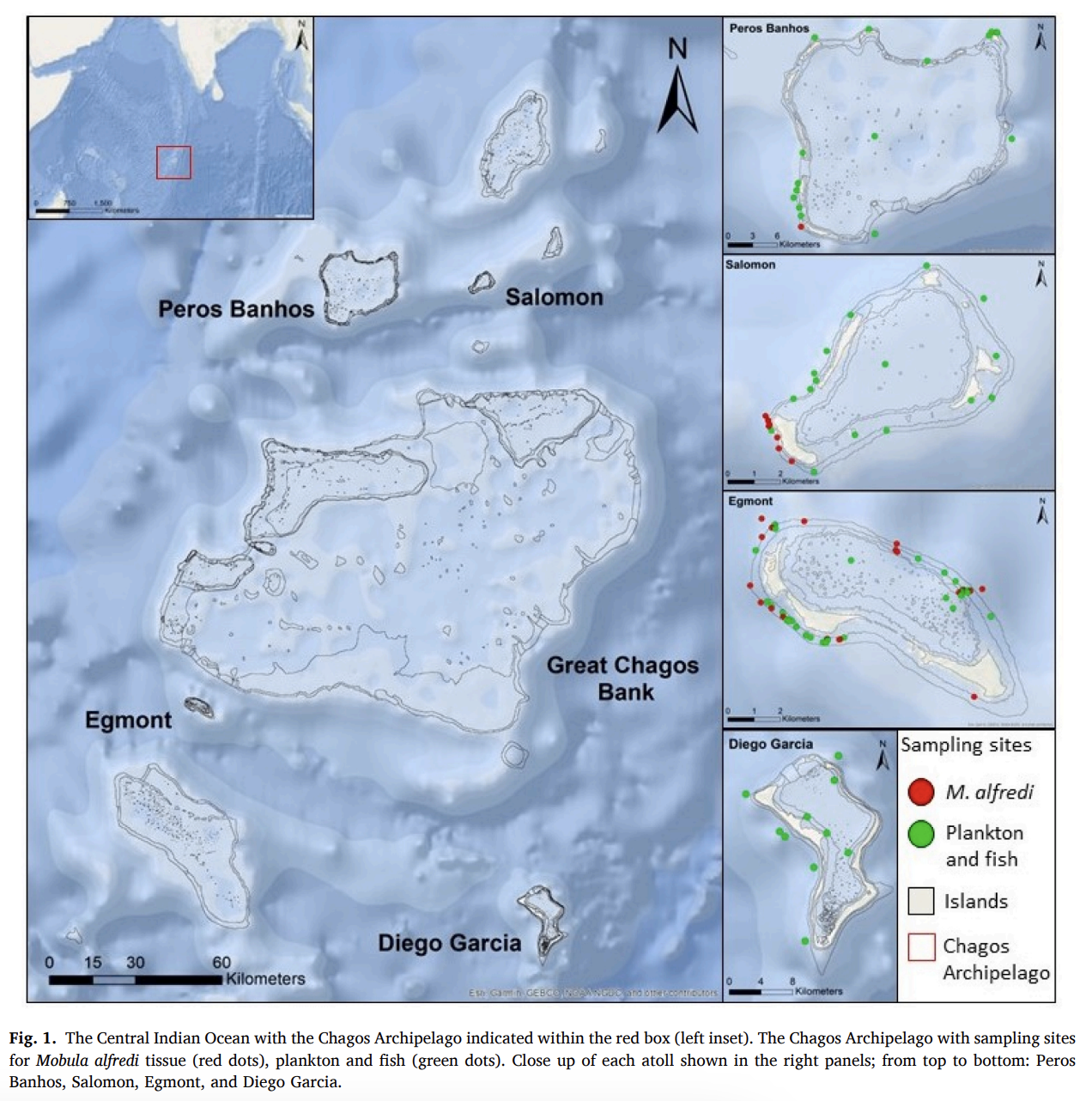
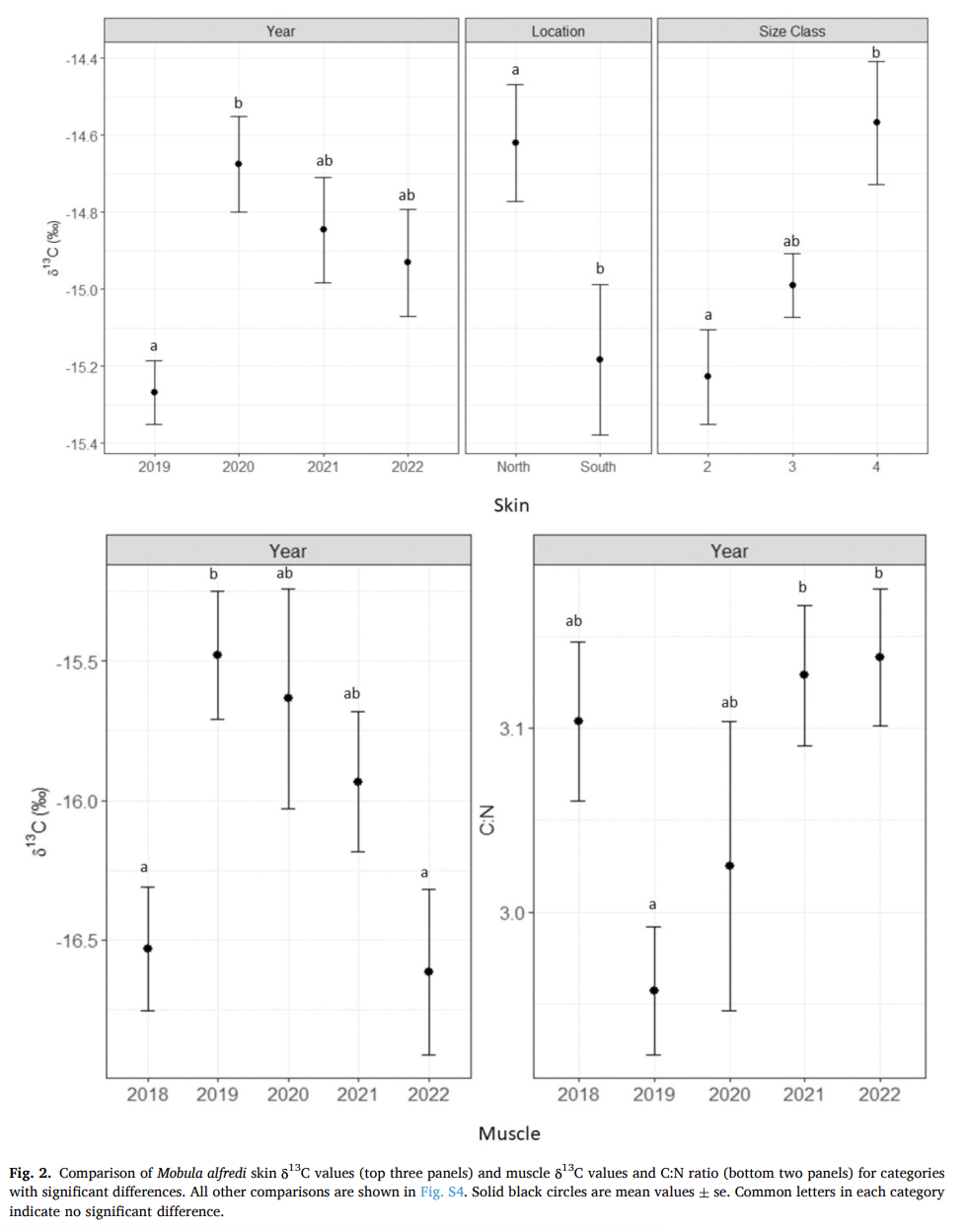

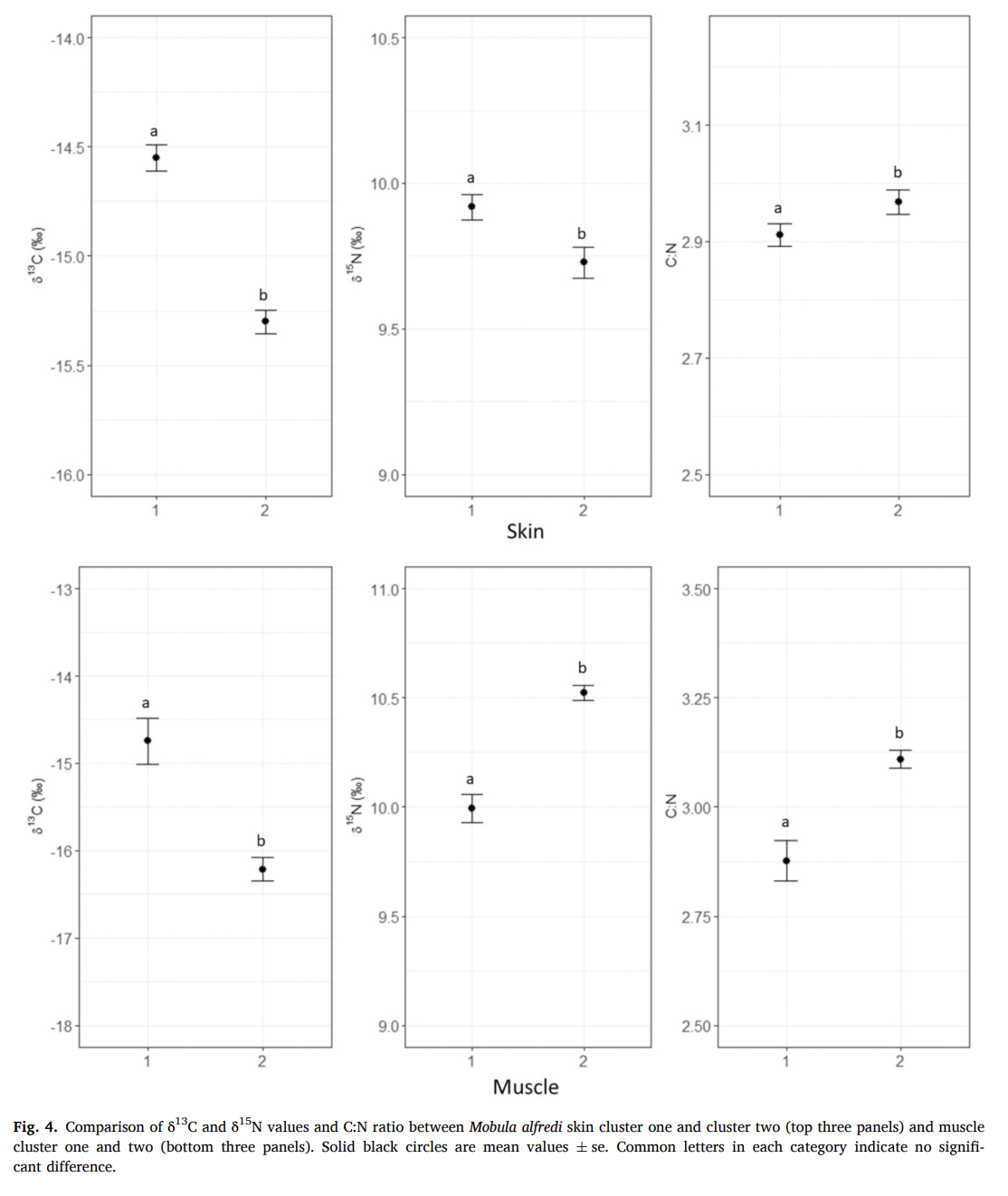
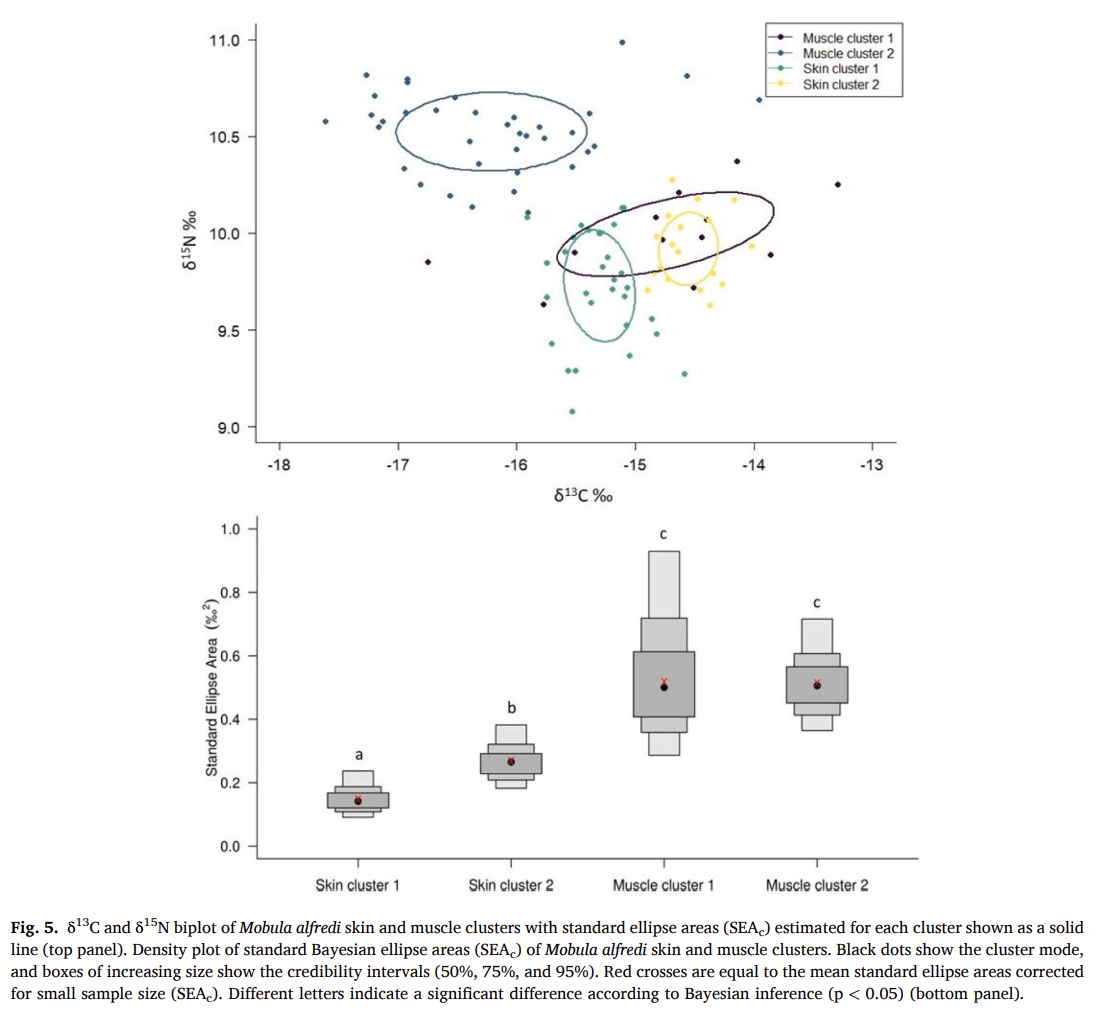
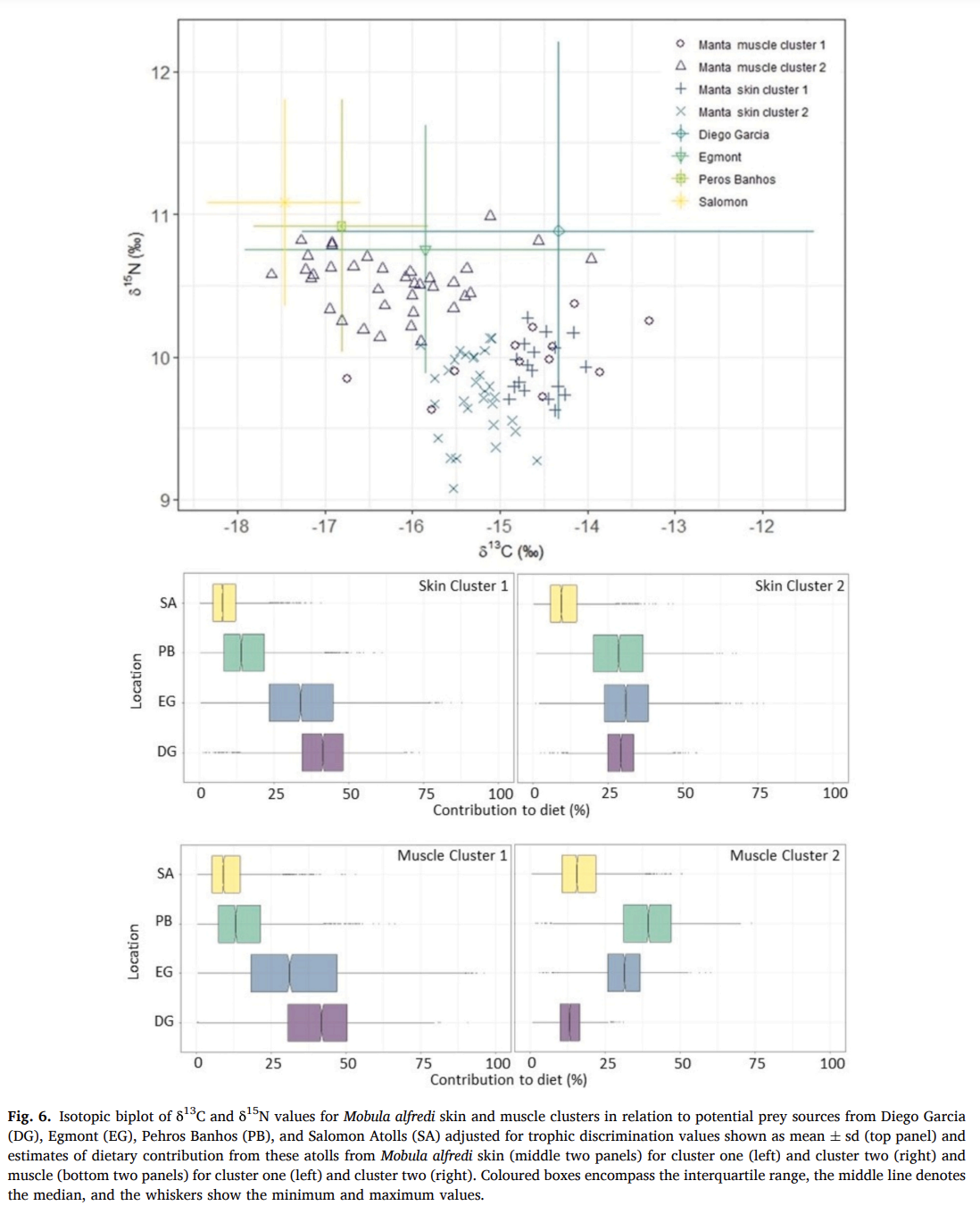
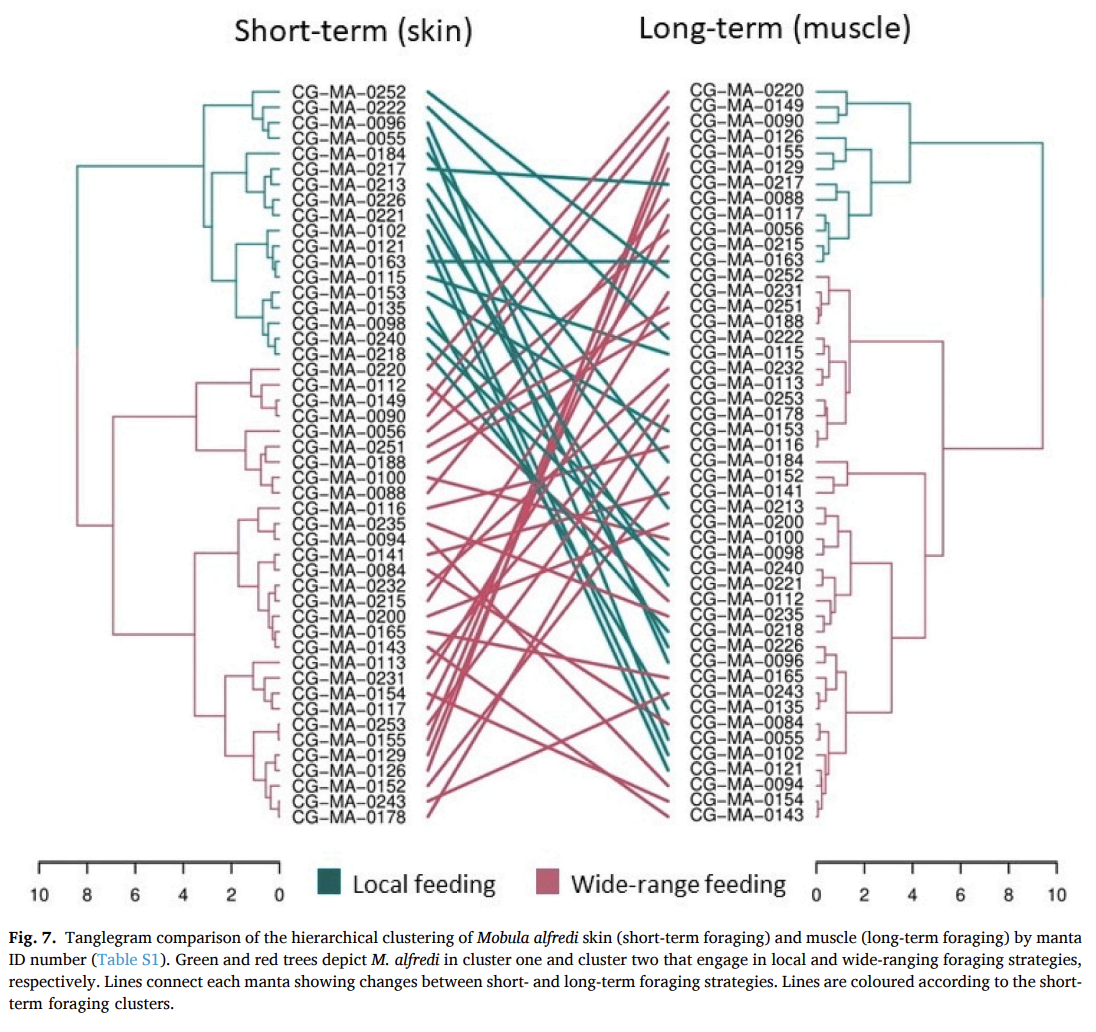
Summary: This study investigates the foraging habits of reef manta rays in the Chagos Archipelago, a region encompassed by a vast no-take marine protected area (MPA). The analysis reveals that these manta rays primarily forage near the shore, with diet influenced by rainfall and ocean conditions. The rays were categorised into two distinct groups, some staying local while others migrate widely across the archipelago. However, illegal fishing and abandoned gear in the protected area pose threats, especially at certain locations. This research enhances our understanding of manta ray behaviour and informs conservation efforts in the region.
Abstract
“Assessing the foraging ecology of a threatened species is necessary to understand their movement behaviour and habitat use patterns, which are essential for developing effective protection strategies. Here, the foraging ecology of reef manta rays (Mobula alfredi) in the Chagos Archipelago, a region encompassed by a vast no-take marine protected area (MPA), was investigated using stable isotope analysis of skin and muscle tissue. Enriched δ13C values suggest the population predominantly forages in nearshore environments. Skin δ13C values increased with increased rainfall, likely associated with the boosts in primary production and zooplankton biomass due to the coastal advection of seabird guano. Annual variations in δ13C values of skin and muscle were observed and are consistent with reduced nutrient transport associated with the effects of Indian Ocean Dipole oscillations, including a deepening of the thermocline, a suppression of cold-water upwelling, and reduced rainfall. Short- and long-term foraging strategies and locations were identified by applying hierarchical clustering, isotopic niche analysis, and Bayesian stable isotope mixing models to δ13C and δ15N of paired skin and muscle tissue samples. Two isotopically distinct groups of M. alfredi were identified, employing either local foraging strategies restricted to specific locations or wide-ranging strategies that likely mean they engage in regular migrations throughout the archipelago. Ninety-eight percent of M. alfredi were estimated to switch between strategies utilising and connecting multiple discrete nearshore habitats, emphasising their role in ecosystem functioning by facilitating the transport of nutrients across ecosystem boundaries. However, illegal, unreported, and unregulated fishing and lost or abandoned fishing gear commonly occur within the MPA. Locations of particular concern are Egmont Atoll as it is a highly active aggregation location and Peros Banhos Atoll where IUU frequently occurs and M. alfredi are estimated to be heavily reliant upon for foraging. Frequent migrations between atolls by M. alfredi also raises concern over their vulnerability to these activities along migration corridors. This research bridges current knowledge gaps in this population’s foraging ecology and concomitant movement patterns, which should inform conservation strategies in the region.”
Infographics
Author Affiliations
Manta Trust
School of Biological and Marine Sciences, University of Plymouth
Institute of Zoology, Zoological Society of London
School of Ocean Sciences, Bangor University
Leibniz Centre for Tropical Marine Research (ZMT)
Plymouth Marine Laboratory
Funded by
Bertarelli Foundation
Garfield Weston Foundation


